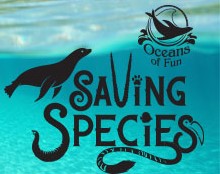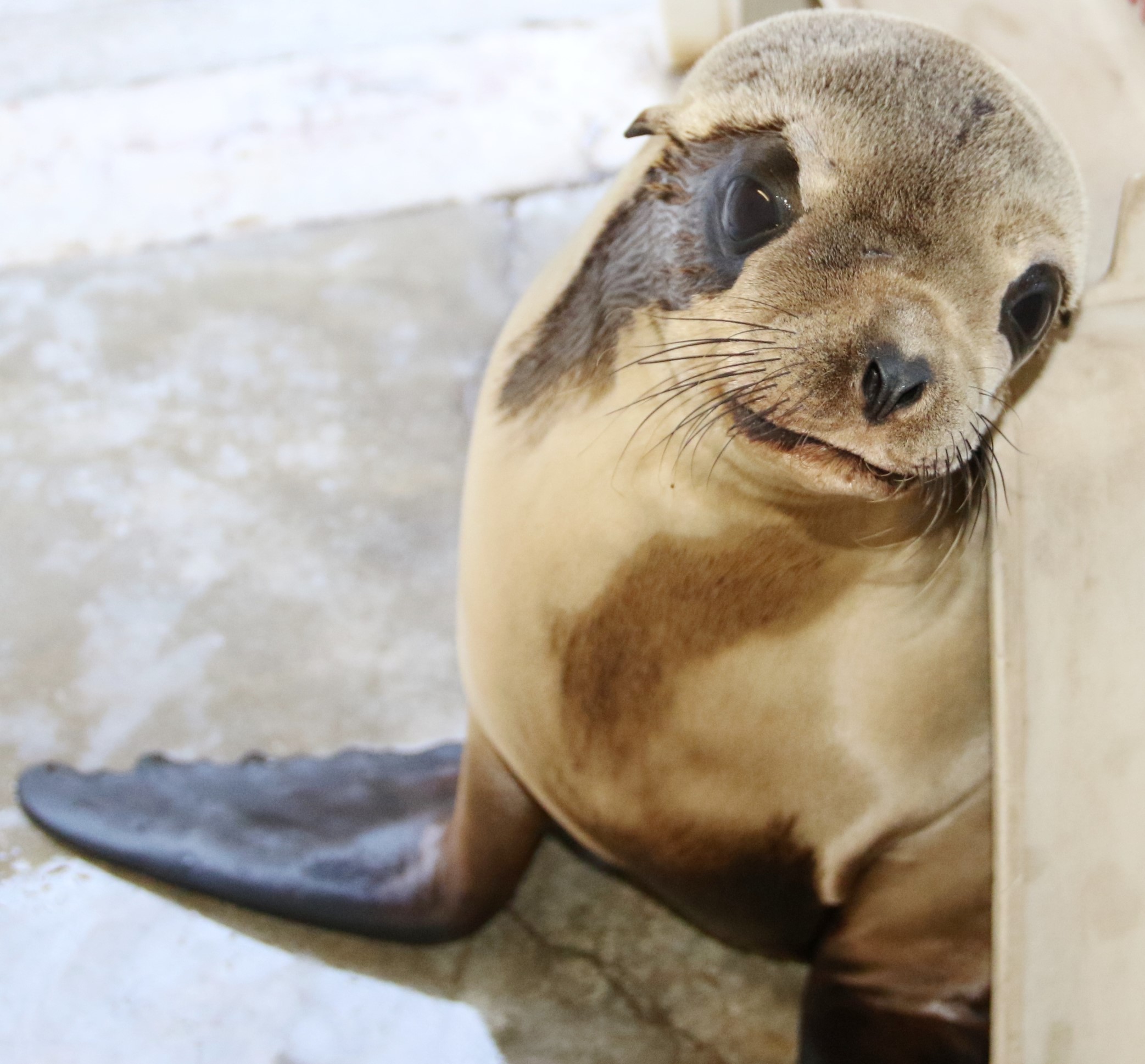Sea Lions
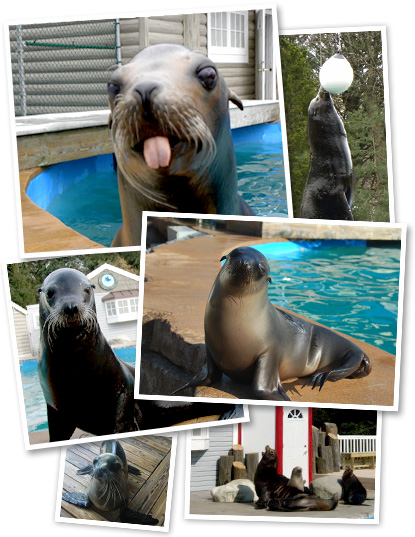
General Information
Scientific Name: Zalophus californanus
Order: Pinnipedia
Life Span: Zoological environment 25 - 35 years, wild 10 - 15 years
Diet: Males consume 30 - 45 pounds of fish daily while females typically consume 15-25 pounds. Diets consist of a variety of fish and invertebrates including capelin, squid, herring, mackerel, smelt and sardines.
Size: Males weigh up to 800 pounds at full maturity and average 8-9 feet in length. Females weigh considerably less at approximately 250 pounds, averaging 6 feet in length.
Fun Facts
- Sea lions can hold their breath 15 - 20 minutes.
- Sea lions can reach speeds up to 22 mph.
- A female sea lion's gestation period is 12 months, including a 3 month delayed implantation. During this time the fertilized egg is free-floating and not attached to the uterine wall.
- Pups nurse for 6 - 12 months.
- California sea lions can be found as far north as British Columbia, along the coast of California and as far south as Mexico.
- Sea lions are capable of diving to depths of up to 1100 feet.
In the winged-footed family also known as pinnipeds, there are true seals and eared seals. The eared seals are what we know as sea lions and fur seals. These pinnipeds have a few characteristics that make them different from the true seals. Eared seals have external ears, large front flippers which are used to propel their bodies through the water reaching speeds between 20 and 25 miles per hour, and they possess a rotating hip bone allowing them to walk on land using all four flippers.
Today there are 17 known species of sea lions and fur seals. The most common type of sea lion seen in zoos and aquariums is the California sea lion. Within the species of California Sea lion there are 3 sub-species. They are Z. c. californianus, Z. c. wollebaeki, and Z. c. japonicus. The species of fur seals differ from sea lions in that they have longer flippers and a thicker coat of fur.
Distribution: California sea lions are naturally found all along the coast of California as far north as British Columbia and as far south down into Mexico.
Habitat: California sea lions spend time both on land and in the ocean waves. While swimming they forage for their food, play and socialize. They breed mainly on offshore islands, ranging from southern California’s Channel Islands south into Mexico. There is also a distinct population of California sea lions at the Galapagos Islands.
Behavior: California sea lions are playful, noisy, social animals. They often rest closely packed together at favored “haul-out” sites on land or float together on the ocean’s surface in “rafts”. Sea lion pups are very playful and can often be seen surfing the waves, leaping and porpoising through the water.
Family Life: California sea lion pups are typically born during the warm summer months. Females give birth to a single pup following a 12- month gestation period typically in June or July. Females give birth on land as pups do not know how to swim at birth. Gestation includes a period of delayed implantation, when the fertilized egg stops growing and remains dormant for a period of 2 1/2 - 3 months. Delayed implantation allows pups to be born when environmental conditions are optimal for their survival. Pups typically weigh about 15 pounds at birth and nurse for 6-9 months. Until the pups know how to swim, mothers leave them on the shore while they return to the sea to feed. Pups have very individual calls which allow their mothers to locate them amongst numerous other pups once she returns to the shore. Sea lion milk is high in fat content allowing pups to gain weight quickly. Pups naturally learn to swim within the first few weeks of life by playing with other juveniles along the beach. Adult females usually mate and give birth every year. Sea lions may live 25-35 years in a zoological environment.
Conservation Status: All marine mammals including sea lions and seals are protected under the ked congress to allow federal authorities to relocate California sea lions that are preying on endangered fiMarine Mammal Protection Act (MMPA), which was passed in 1972 by the United States to protect these animals from hunting and harassment. A few years prior to the passing of the MMPA, Mexico and Canada also banned the hunting of these animals. Although this act is in place, there are many dangers at sea and on land that marine mammals face. Pollutants, commercial fishing, and drift nets are just a few reasons why it is difficult for these animals to survive.
The National Marine Fisheries Service has assh species, or a threat to safety, property and commercial fishing. Many species are listed as endangered and some are extinct. The Japanese sea lion is one species that has not been reported on in more than 30 years and is listed as extinct. Humans are one of the largest threats to these animals and their environments. It is our responsibility to protect and preserve these animals and the environments in which they live. One of the easiest ways that we can help is to recycle and dispose of trash and hazardous material properly. In doing this we will help reduce the amount of debris that flows into the oceans and washes up onto shorelines to create a safe and healthy environment for these animals to survive for future generations. The California sea lion population is stable, which means that it is not currently at risk for extinction. The world population is estimated at 200,000 animals.
For further information
Seal Conservation Society: www.pinnipeds.org
ADF&G Wildlife Notebook Series: www.adfg.state.ak.us/pubs/notebook/notehome.php
GeoZoo: www.geozoo.org
Riedman, Marianne. The Pinnipeds: Seals, Sea Lions, and Walruses. Berkley: University of California Press, 1990.




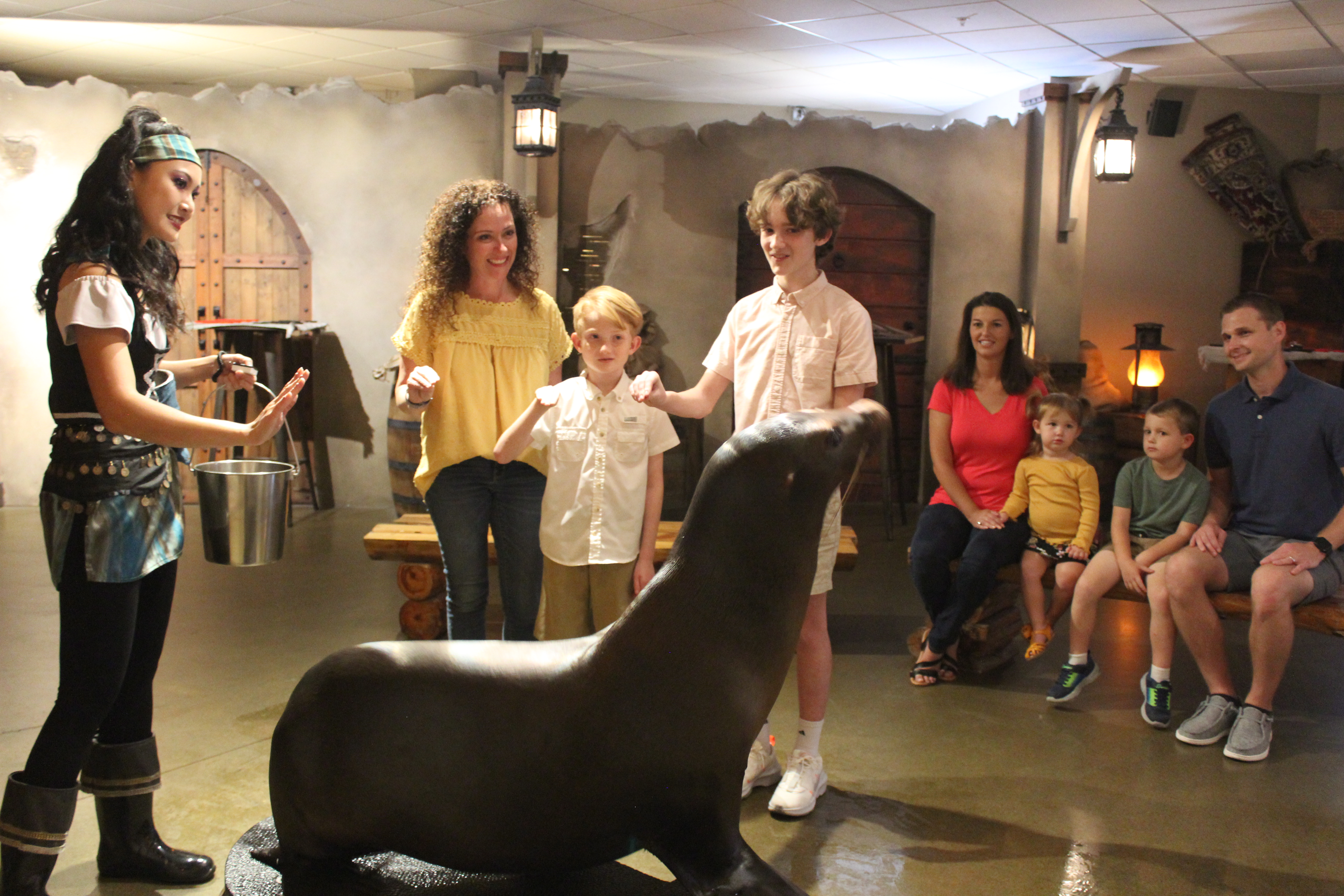 Animal Encounter
Animal Encounter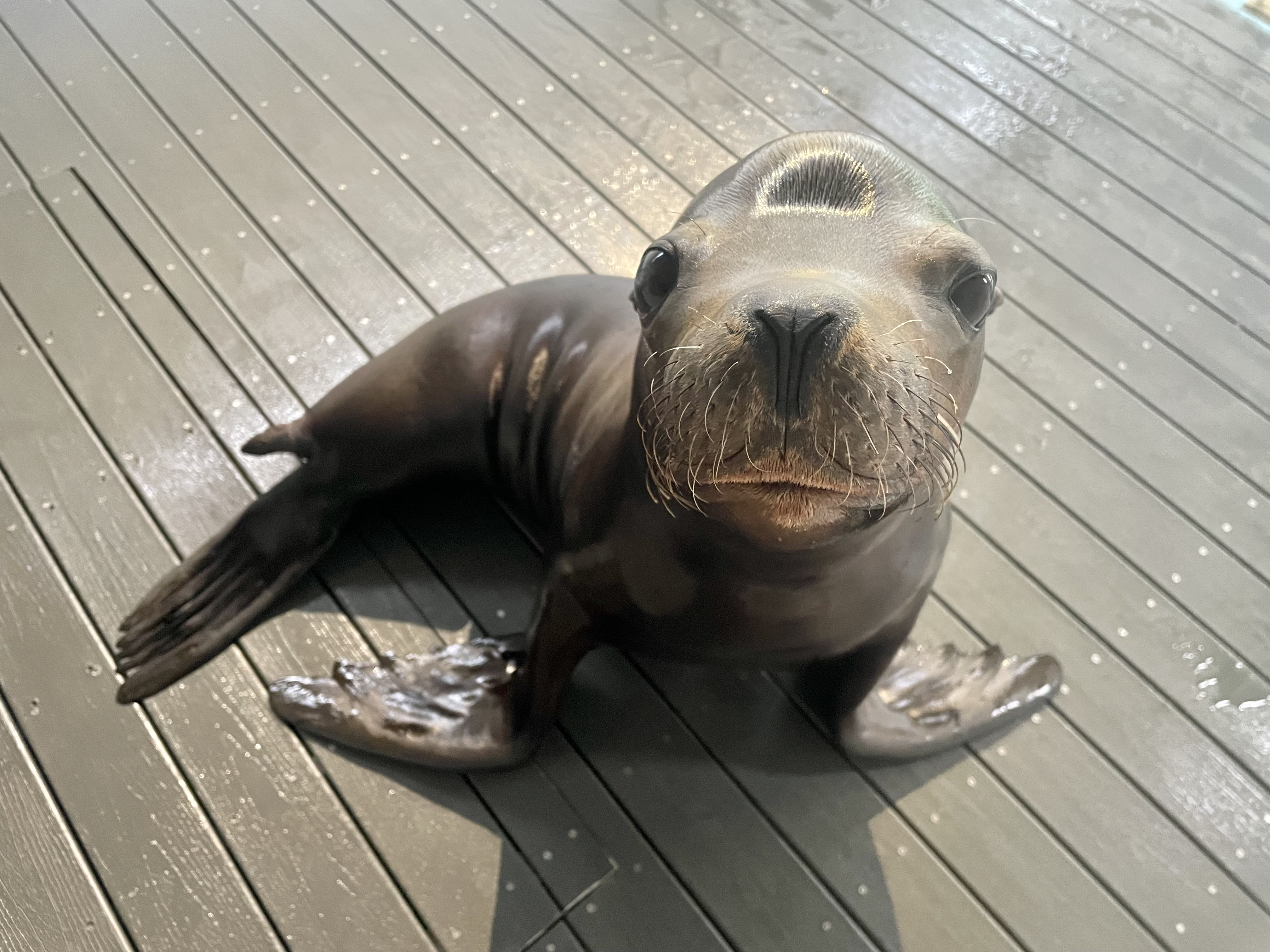 Our Locations
Our Locations
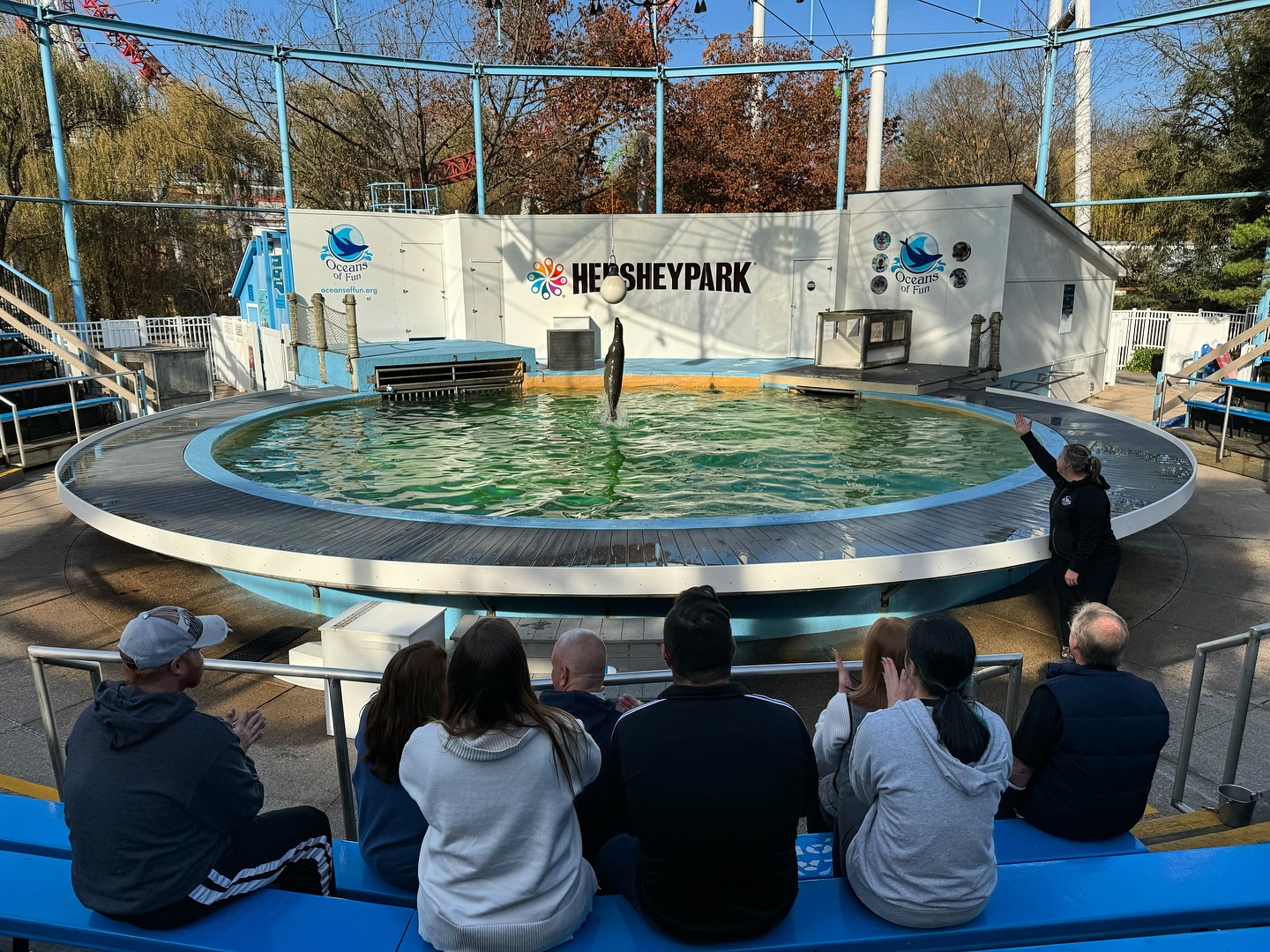 Family Fun
Family Fun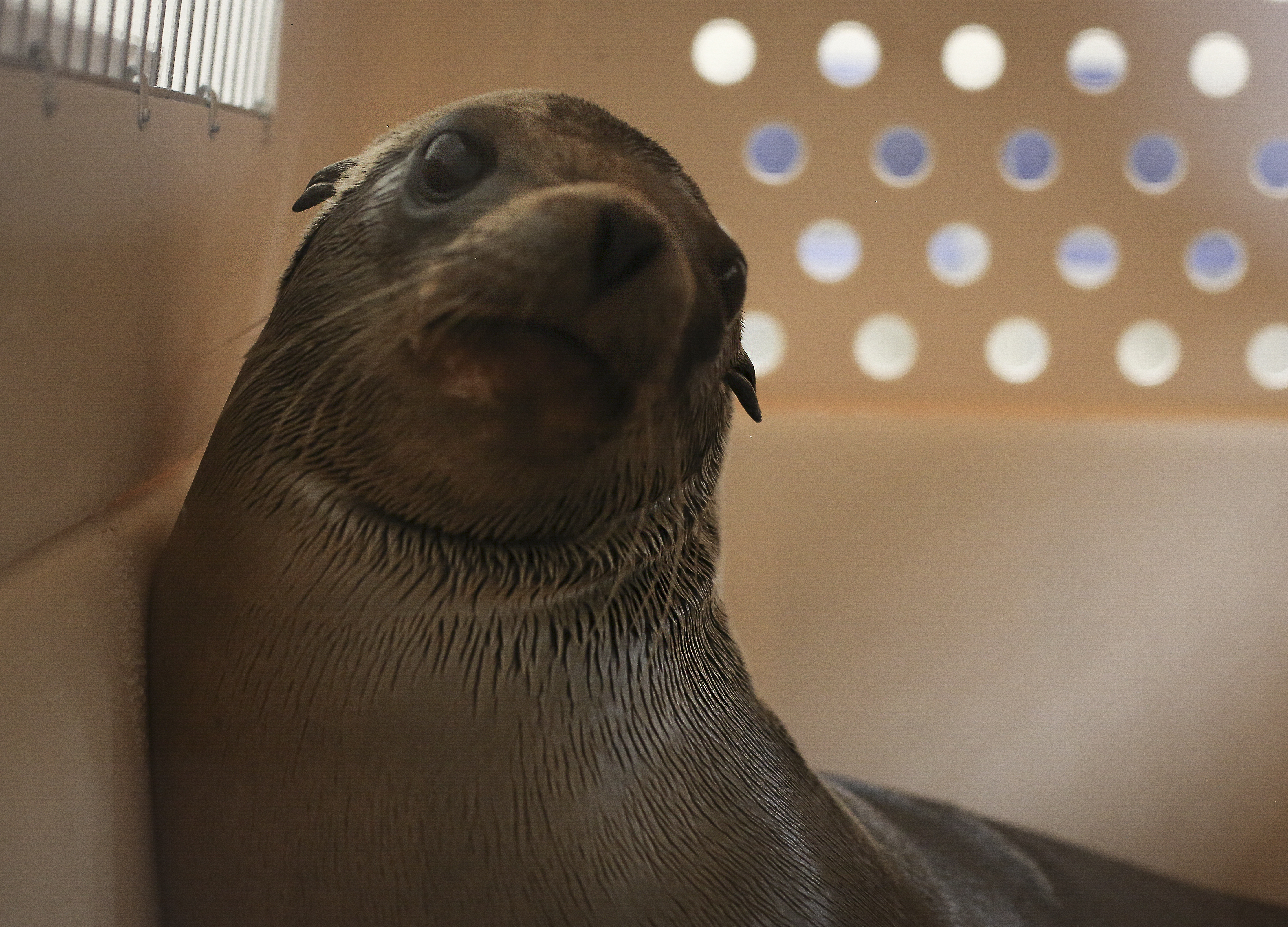
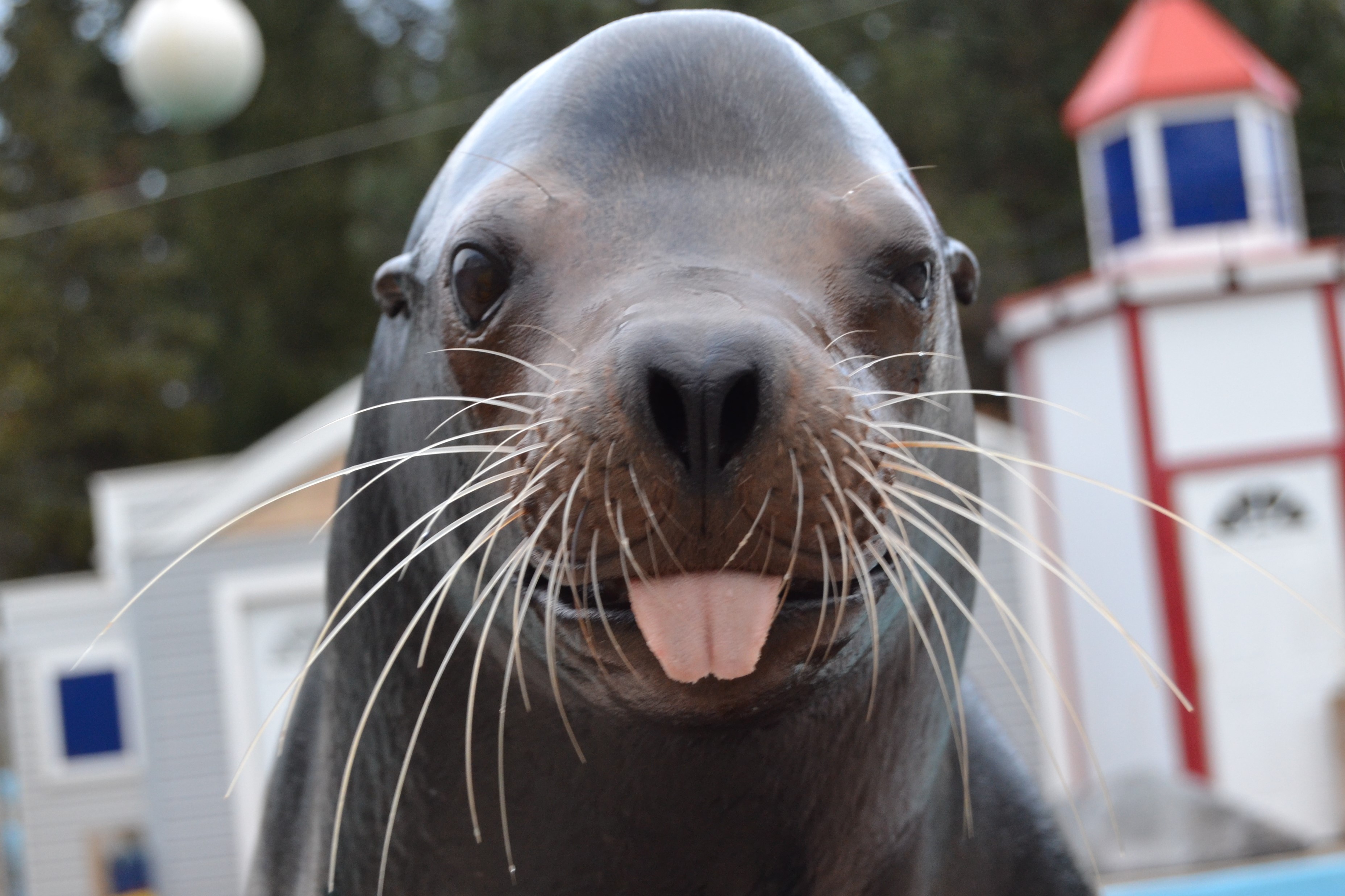
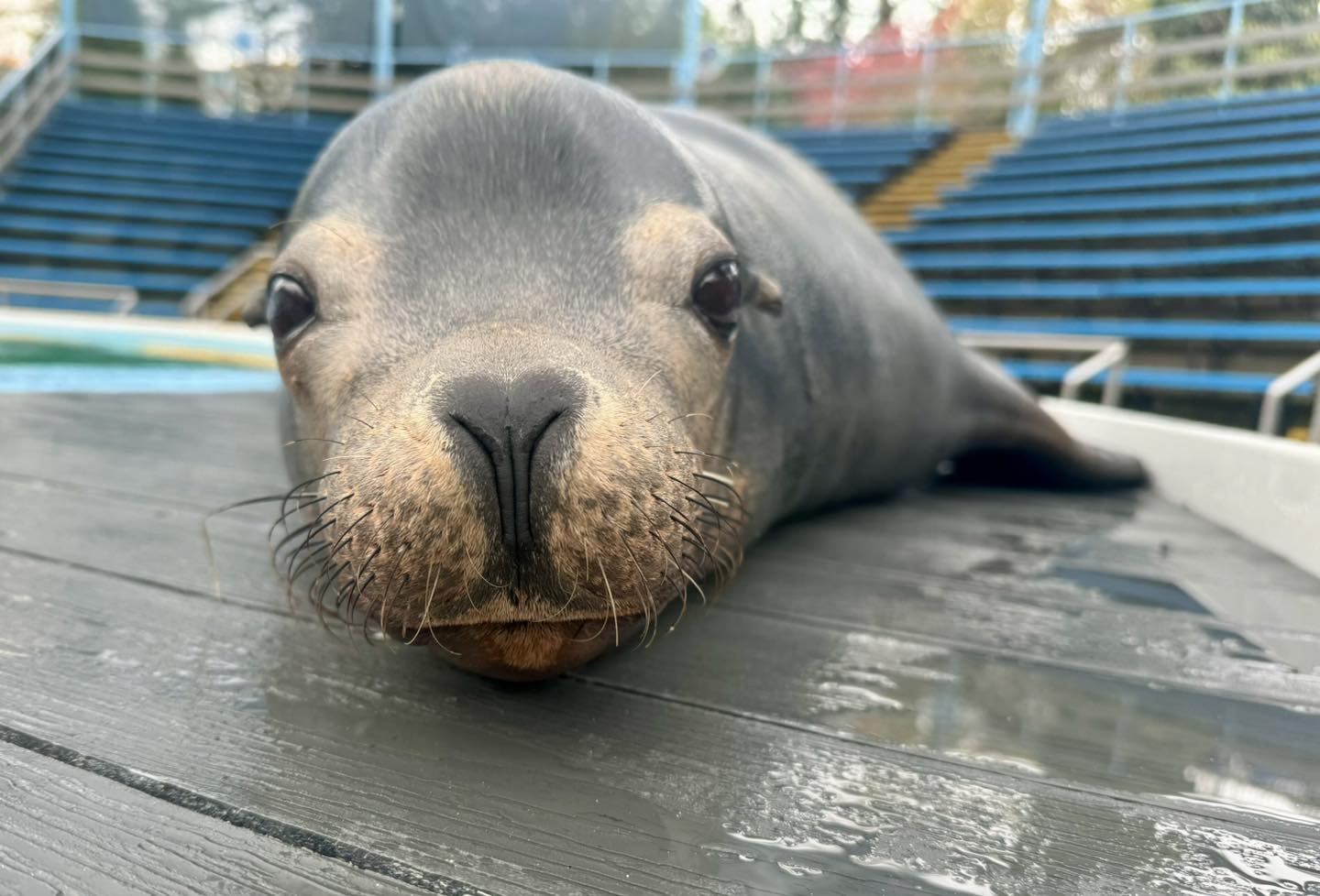 Meet Ripley!
Meet Ripley!
